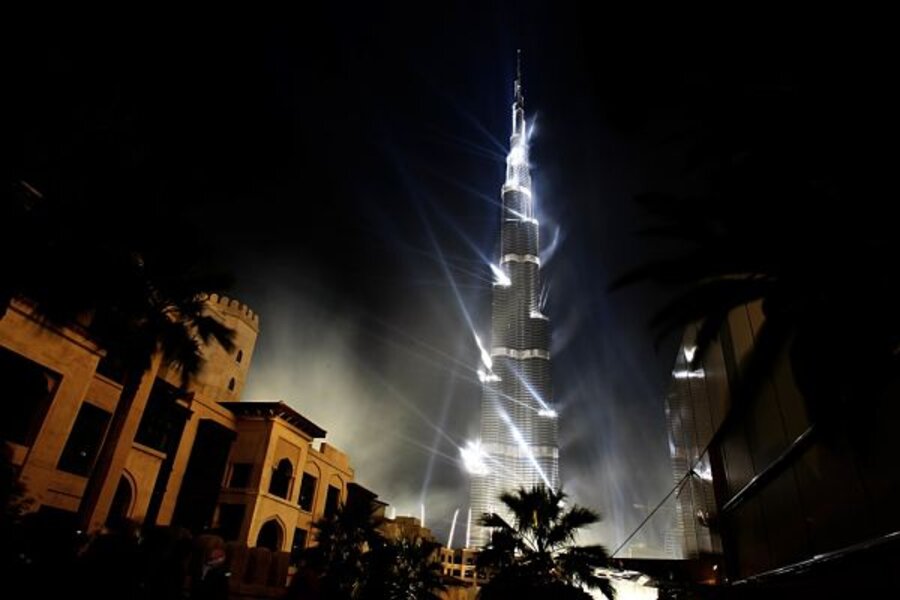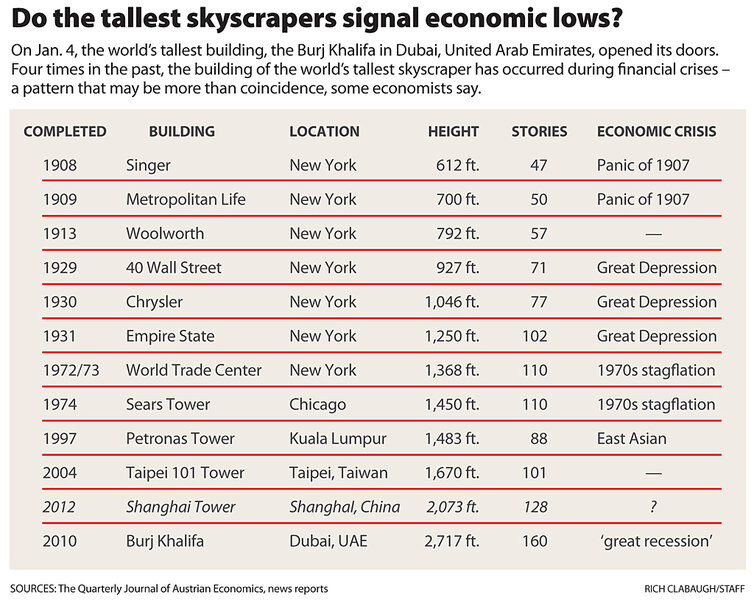World's tallest building: Is the Burj Khalifa a herald of economic woe?
Loading...
The world's tallest building opened Monday in Dubai – known as the Burj Khalifa, it's an exuberant architectural triumph in the middle of a deep economic swamp.
It's often that way. The tallest skyscrapers always seem to pop up just as the economy is headed down.
The Singer and Metropolitan Life buildings were under construction in New York when the Panic of 1907 hit the United States. Construction of the Chrysler and Empire State buildings heralded the start of the Great Depression.
A sour economy accompanied the opening of the Sears Tower (the mid-1970s downturn) and Malaysia's Petronas Tower (the Asian financial crisis). The phenomenon happens so often it has a name: the skyscraper index (click on chart above). [Editor's note: This paragraph was changed to show the correct location of the Petronas Tower.]
So along comes the Burj Khalifa, until today known as the Burj Dubai, which could signal the reach of the "great recession" or point to Dubai's more recent economic woes.
In the midst of a real estate crash, the last thing the emirate needs is a new skyscraper with 160 floors of commercial and residential space. Things got so bad for the city-state's indebted sovereign fund that it nearly went bankrupt a month ago and had to be bailed out by neighboring Abu Dhabi, an occurrence that some say led to the change in the building's name, which now honors Abu Dhabi's ruler Khalifa bin Zayed.
The skyscraper index works because developers tend to make ambitious gambles with huge new towers at the point of the business cycle when interest-rate and price signals can get distorted, wrote Mark Thornton, a senior fellow at the Mises Institute, in a 2005 research paper (.pdf). The institute is a research and education center espousing Austrian School economics and based in Auburn, Ala.
The skyscraper index has not predicted all major economic downturns (like the depressions of 1920–21 or 1937–38), he adds.
So what does it mean that in 2014, China is expected to complete the Shanghai Tower, which at 2,073 feet will be its tallest building and the world's tallest after the Burj Dubai?
Second-tallest skyscrapers count, writes Mr. Thornton in an e-mail. "Country records do have meaning for the local economy and groupings of new skyscrapers are part of the global crisis phenomenon."
Viewed from the skyscrapers, world economies may be getting worse, not better, he writes.






